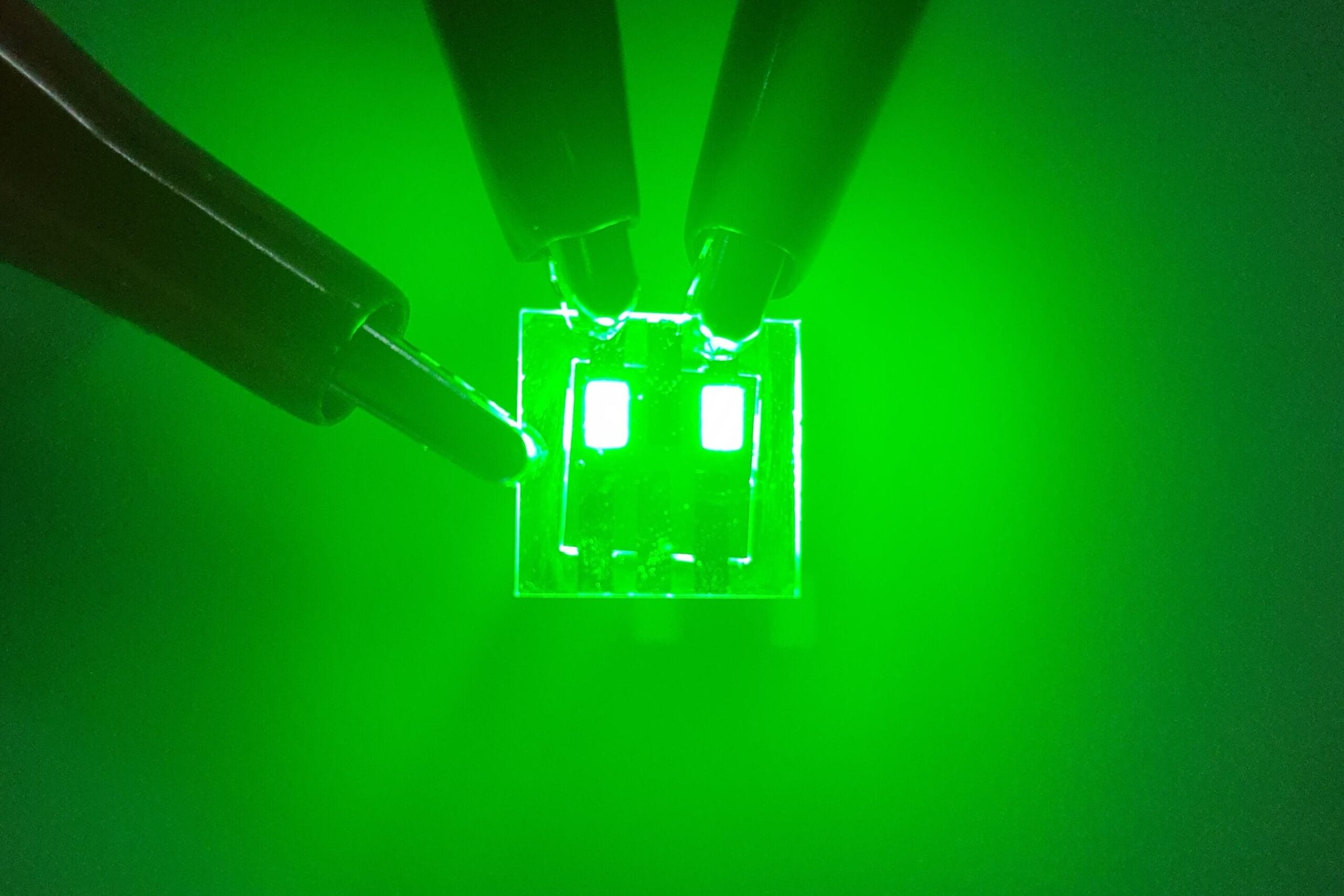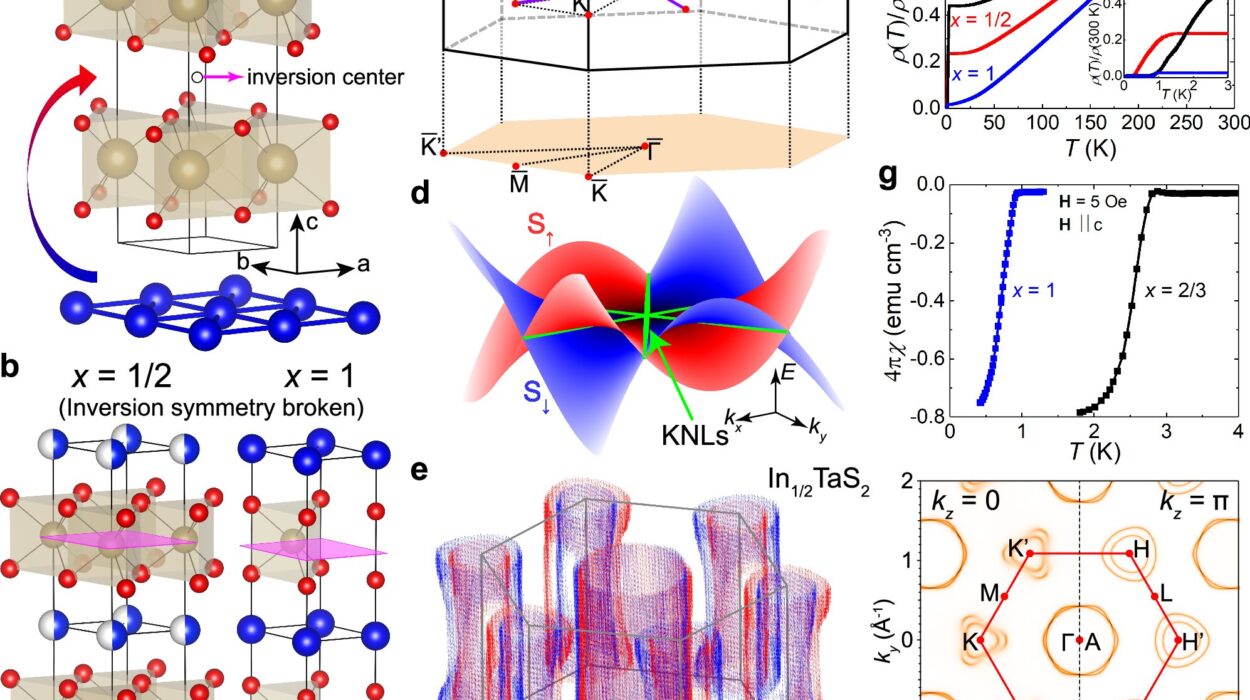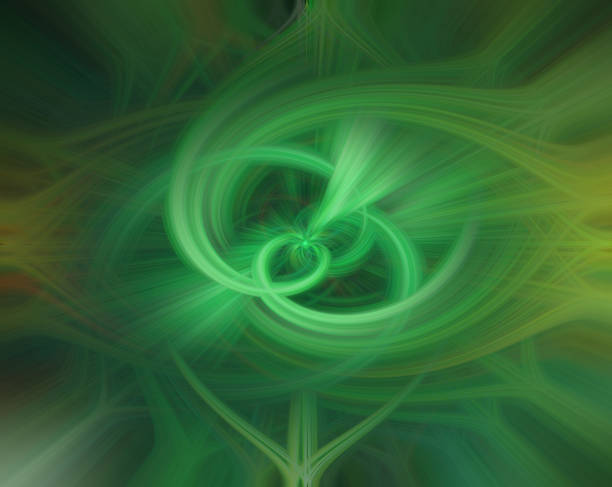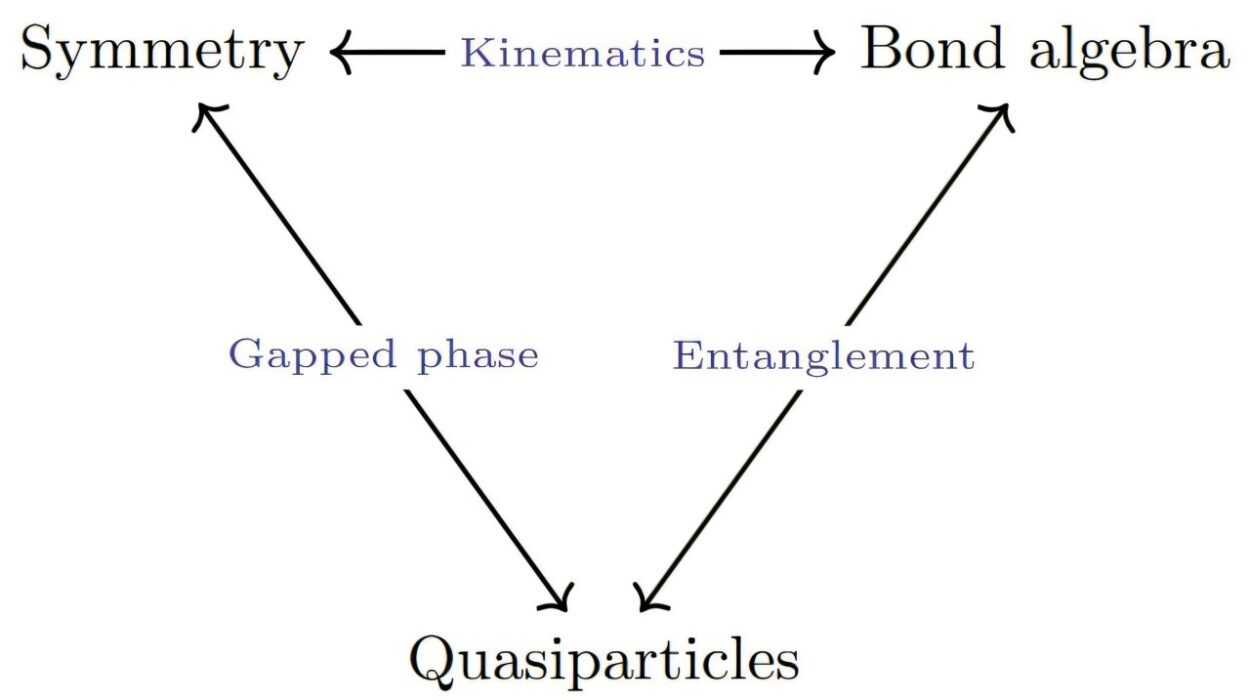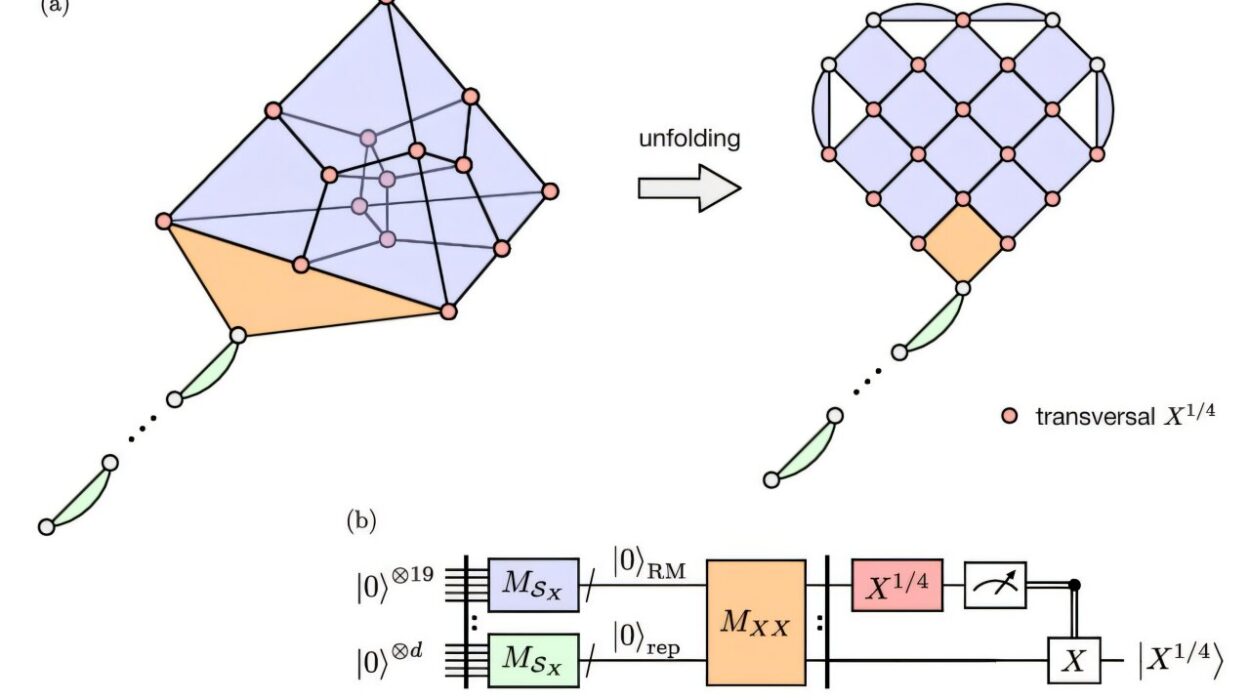In the fast-moving world of digital displays—where every pixel competes for brilliance—green has long been the elusive champion. It’s the color that anchors the vibrant glow of screens in our pockets, our living rooms, and increasingly, the immersive worlds of virtual and augmented reality. Yet making green both dazzling and energy-efficient has stumped engineers for years.
Now, researchers at the Hong Kong University of Science and Technology (HKUST) have cracked the code. They’ve invented a new generation of green quantum rod LEDs (QRLEDs) that shine three times brighter, last longer, and sip far less energy than their predecessors. These groundbreaking light sources don’t just push boundaries—they redefine them.
“Our work demonstrates that meticulous control over nanorod composition and interface engineering can lead to disruptive advances in optoelectronic performance,” said Prof. Abhishek K. Srivastava, Associate Professor at the Department of Electronic and Computer Engineering at HKUST, who led the breakthrough. “This paves the way for high-resolution, energy-efficient displays with unprecedented brightness and longevity.”
The Quest for Perfect Green
While red and blue emitters in modern displays have marched steadily forward, green has remained a technological bottleneck. The reason lies deep in quantum physics. For displays that dazzle the eye, emitters must produce light with narrow wavelengths, resulting in vivid, pure colors. Quantum materials—like quantum dots and quantum rods—achieve this in ways traditional LEDs can’t, allowing screens to burst with richer, truer colors.
Among these advanced materials, quantum rod LEDs (QRLEDs) have attracted significant interest. Compared to their dot-shaped cousins (QLEDs), rods channel light more effectively outward, enhancing brightness. But green QRLEDs have stumbled.
“The green emission from quantum rods has always been problematic,” explained Prof. Srivastava. “Challenges include inefficient charge injection, electron leakage at interfaces, and structural barriers like thick insulating shells and long organic ligands that hinder charge transport.”
These technical roadblocks have prevented QRLEDs from achieving the pure, radiant greens required for ultra-high-definition displays, leaving manufacturers stuck with less efficient solutions.
Reinventing the Quantum Rod
Prof. Srivastava’s team attacked these problems from multiple angles, diving into the nanoscale world of quantum rods with surgical precision.
First, they engineered quantum rods featuring a core-gradient alloy structure. This sophisticated architecture allows smoother transitions of electrical charge inside the nanorod, ensuring electrons and holes recombine efficiently to emit light. By minimizing the outer shell thickness, they eliminated structural barriers that typically block the flow of charge.
The new quantum rods glow brilliantly in the deep green range—between 515 and 525 nanometers—positioned at the very peak of the color triangle that defines the limits of human vision. This means screens can reproduce even more intense, lifelike greens, expanding the overall color gamut for next-generation displays.
Equally important, the researchers crafted rods that are shorter and smoother in shape. “Uniform morphology and shorter lengths allow these rods to pack densely in thin films without leaving gaps,” said Prof. Srivastava. “This results in films that are void-free, critical for both brightness and device reliability.”
Molecular Tweaks Make the Difference
Beyond structural innovations, the team turned their attention to the nanorods’ outer layers. Typically, quantum rods are coated in long organic molecules called ligands. These ligands stabilize the nanocrystals but also act as insulators, slowing down electrical charge transfer—a death sentence for efficient LEDs.
HKUST researchers replaced these long ligands with shorter ones, opening up faster and more efficient pathways for charges to move. Additionally, they introduced a bilayer hole transport layer in the device architecture. This clever tweak ensures that positive and negative charges meet precisely where light emission is most efficient, minimizing energy loss and further suppressing electron leakage.
“Every aspect of this device—from the nanorod’s inner core to its interfaces with other layers—has been optimized,” noted Prof. Srivastava.
Record-Breaking Performance
The result of all this meticulous engineering? A record-breaking quantum rod LED.
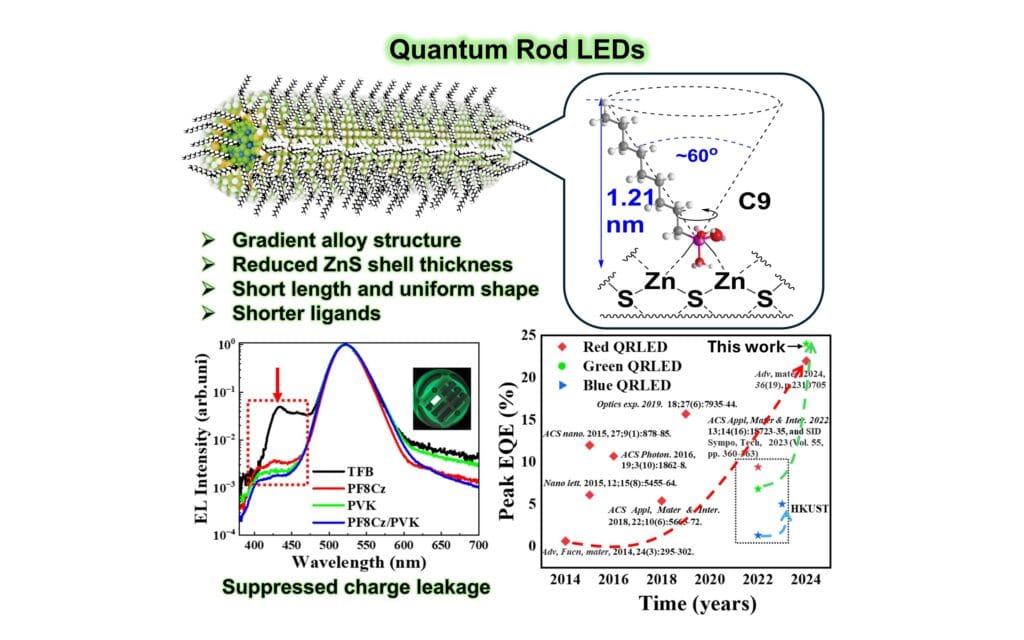
- Efficiency Leap: The new green QRLEDs convert electrical power into light with 24% external quantum efficiency (EQE), surpassing the previous best of 22%.
- Brilliance Unmatched: They blaze with a luminous intensity of 89 candelas per ampere, producing three times the brightness of older green LEDs. Peak luminance exceeds a staggering 500,000 candela per square meter—a level bright enough for dazzling outdoor displays and high-dynamic-range video.
- Longevity Boost: Operational lifetime has surged past 22,000 hours, marking a significant milestone toward commercial viability for consumer electronics.
These advances mean future smartphones, televisions, AR/VR headsets, and professional monitors could deliver sharper, more vibrant visuals while consuming less power—a vital consideration in an increasingly energy-conscious world.
Beyond Displays: A New Era for Quantum Light
Though display technology is the immediate beneficiary, Prof. Srivastava believes the implications go further. QRLEDs could transform lighting, sensing technologies, and even biomedical imaging, thanks to their tunable colors and precise emission properties.
“We’ve shown that quantum materials are capable of far more than people believed,” he said. “This is not just an incremental improvement—it’s a major leap that could shape the next decade of optoelectronics.”
In an age where screens are windows to our digital lives, Hong Kong’s breakthrough in bright green light promises to make that view clearer, richer, and greener than ever before.
Reference: Maksym F. Prodanov et al, Highly Efficient and Stable Green Quantum Rod LEDs Enabled by Material and Charge Injection Engineering, Advanced Materials (2025). DOI: 10.1002/adma.202503476
